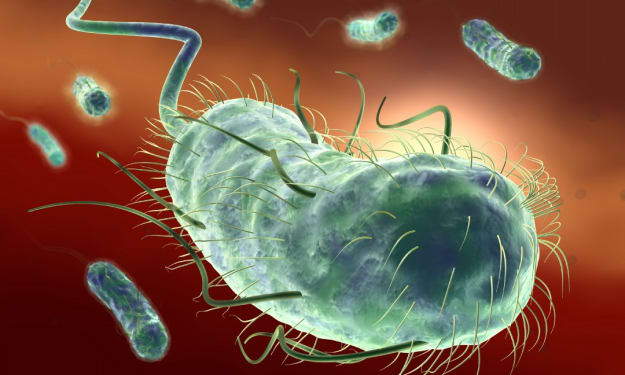Human 2.0: Embodying the Octopus
Why a cybernetic body need not be a human one. Musings on cephalopod biology, embodied cognition, and the future of transhumanism.

I’ve been reading the brilliant Other Minds: The octopus and the evolution of intelligent life by Peter Godfrey-Smith. It got me thinking about the many ways we are similar to our distant cousins the cephalopods, particularly octopuses, in terms of behaviour.
But what if we were similar to cephalopods biologically? Morphologically? Should we be thinking outside the box when designing our cyborg bodies? Are there aspects of cephalopod biology we would be foolish to pass up the chance to incorporate into Human 2.0?
Intelligent aliens
And I do mean our distant cousins the cephalopods (octopuses, squid, cuttlefish and nautiluses). Our common ancestor, a minuscule flatworm, is found on an evolutionary fork 600 million years into the past in the Precambrian era. For comparison, our last common ancestor with chimpanzees lived only six million years ago.
The playful and wily antics of octopuses (as well as their psychic, World Cup results predicting powers) have been noted in numerous anecdotes: escaping their tank to poach food; short-circuiting unpleasant lights in their laboratory environments. Squirting their least favourite experimenter with jets of water; leading their favourite scuba diver hand-in-tentacle to show off their den.
Such anecdotes from scuba enthusiasts and marine researchers, as well as formal study of cephalopod behaviour, are a sure indication of one thing: following the divergence, intelligent life evolved twice-over on Earth.
In a way, according to Godfrey-Smith, this makes octopuses the closest thing to an intelligent alien we will ever encounter.

Similarities between cephalopods and vertebrates
- “camera” eyes with a lens for focusing images on the retina
- large brain (relative to body mass) and nervous system
- ability to adapt to new and unusual circumstances
- awareness of captivity
- learning by attending to reward and punishment
- short term and long term memory
- sleep (including REM sleep —confirmed in cuttlefish at least)
- expressiveness
- playfulness
- recognition of individuals, including those of other species
- “inventiveness, curiosity, and sensory acuity”
- the use of found objects as shelter
Embodied cognition
Plato tells us that the philosopher, unlike the shoddy butcher, cuts reality at the joints. Despite everything, then, we begin with the body. Before the idea, one is before the meat — a meatphysics precedes every metaphysics
— ‘Seduce or Die’, Jon Roffe
“Meatphysics” indeed. Embodied cognition refers to the “smartness of the body” i.e. its ability to encode information about the environment and how to navigate it. Our minds may not be chained to our bodies but our physicality certainly shapes how we interact with the outside world. Sensor-motor processes and the morphology of the body have a profound, defining impact on cognition (Anderson 2003; Ionescu & Vasc, 2014).
For instance, the size of an animal’s body determines how it perceives time, with smaller animals, such as insects and birds, experiencing finer timescales as an adaptation to keep safe from predators (Healy, McNally, Ruxton, Cooper & Jackson, 2013).
Consider also, the specifics of our sensory organs — the limited bandwidths of hearing and vision, our inability to echolocate or sense electric or magnetic fields — and the effects these must have on the way we interact and are adapted to our environment.
In short, embodied cognition is why I have the following suggestions regarding the future augmentation of the human body.
Human 2.0
I want a perfect body
I want a perfect soul”
(Radiohead, 1993, Creep)

I’m not going to suggest we start squirting ink or jets of water at each other (wet floors are a OH&S issue), nor that we replace walking with jet propulsion. The benefits of two more hearts, or copper-based blood, are also unclear. And while I certainly wouldn’t mind an extra arm to hold my latte while I fumble with my train ticket and phone in the mornings, I’m not suggesting extra appendages either. (Though who am I to stop you?)
However, there are several aspects of cephalopod biology that I would like to incorporate.
Flexibility of form
Cephalopods divested themselves of their external shell during the Mesozoic Marine Revolution and they’ve been living the dolce vita ever since.

Imagine being unencumbered by fixity of form. Shapeless and ever shifting — imagine the flexibility of mind it would engender. Not to mention, the ability to hide in narrow crevices and fit our whole body through a hole the size of an eyeball.
More arms, and more arm neurons
I’ve changed my mind on this score — Human 2.0 could use an extra coffee cup holder. While octopuses do have a central brain, twice as many neurons are contained in their many tentacles (six “arms” and two “legs”, not favoured for gripping and handling objects).
Having a more distributed and less centralised nervous system sounds like a great adaptation to me. Imagine all that we could achieve if the brain were freer to focus on highfalutin’ matters rather than tend to every aspect of arm movement. I want my hands to be able to improvise. And yes, I’m getting comic book “Doc Oc” vibes too. (I, for one, vow to use my extra appendages for good, rather than evil.)
I also wonder, what would it be like to be more tactile-based rather than so heavily vision-orientated?
Chromatophores
Volitional colour change for camouflage, courtship (or rejection thereof: female squids use a white stripe to turn away suitors who are not up to snuff), or displays of aggression— the possibilities are endlessly. Sure, humans have blanching, blushing and mottling — but I want more. I want to literally go green with envy… then gold, purple, rust and pale, speckled grey.
Human 2.0 can’t leave personal expression up to cloth, make-up, piercings, dyed hair, and static, inked designs. I want ‘pixel-like sacs of colour’ under my skin expressing the ‘electrochemical tumult’ inside me. Down with metaphors, up with chromatophores! I want my every brainwave displayed in technicolour on my body, an inscrutable kaleidoscope of shifting patterns and hues.
Design flaws to avoid
Having an oesophagus running through the middle of our brains would not be an aspect of octopus biology to emulate. Ideally, swallowing a fish bone shouldn’t result in an impromptu lobotomy.
The sky’s the limit
Of course, there’s no reason to limit Human 2.0 purely to advantages of the cephalopodic kind. We’re talking a veritable smorgasbord of Doctor Moreauesque modification. The future is bright ...and Human 2.0 can see every bandwidth of it.
Further reading
Anderson, M. L. (2003). Embodied cognition: A field guide. Artificial intelligence, 149(1), 91–130.
Godfrey-Smith, P. (2016). Other Minds: The octopus and the evolution of intelligent life. London: William Collins.
Healy, K., McNally, L., Ruxton, G. D., Cooper, N., & Jackson, A. L. (2013). Metabolic rate and body size are linked with perception of temporal information. Animal Behaviour, 86(4), 685–696.
Ionescu, T., & Vasc, D. (2014). Embodied cognition: challenges for psychology and education. Procedia-Social and Behavioral Sciences, 128, 275–280.
About the Creator
Angela Volkov
Humour, pop psych, poetry, short stories, and pontificating on everything and anything






Comments
There are no comments for this story
Be the first to respond and start the conversation.